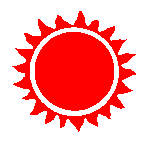Ton
Ton has two meanings.
- A unit of volume equal to 13.5 cubic meters. It is derived from the volume of a ton (mass) of liquid hydrogen, the fuel used by starships.
- Ton (or tonne) is a unit of mass equal to one thousand kilograms.
- 1.0 Kton (kiloton) = 1,000.0 tons. It may also be written as sTon.
- DTon = Dimensional or Displacement Ton. It may also be written as dTon.
Description (Specifications)
Where it is important to distinguish between the two the former is referred to as a dTon (for displacement Ton) and the latter as an sTon (for standard Ton).
The Hull: The foundation of the starship is the hull, into or onto which all other components are placed. Hulls are identified by their mass displacement (...expressed in tons; one ton equals 14 cubic meters) and by their configuration.[1]
History & Background (Dossier)
The creation of starship deck plans is based on the assumption that one ton of mass displacement equals fourteen cubic meters. The standard displacement ton used for these calculations is derived from the volume of liquid hydrogen, the fuel source for most standard star faring vessels.[2]
The square grid scale used on most deck plans is 1.5 meters on a side. Clearance between decks is normally 3 meters. This means that two floor squares, extended floor to ceiling, equals four 1.5 meter cubes or nearly 14 cubic meters (1.5 x 1.5 x 1.5 x 4 = 13.5 cubic meters), or one ton. A 100 dton starship would thus contain approximately two hundred grid squares within.[3]
Allowances of approximately + or - 10% were made in most areas to allow for better representation of specific parts of the ship and to cover various anomalies. For example, crew quarters call for four tons per sophont: the actual tonnage allocated on many plans is often less than that, but additional area is devoted to communal areas such as galley, mess, wardroom, and recreation areas.[4]
Also, a limited volume of passages has been added to some starships. Passages and access ways which have no other use may be safely added to a ship without affecting volume or displacement for construction purposes. These additional passages should amount to ho more than an additional 10% of the ship's total volume.[5]
References & Contributors (Sources)
| This article has metadata. |
| This article is missing content for one or more detailed sections. Additional details are required to complete the article. You can help the Traveller Wiki by expanding it. |
- Marc Miller, Frank Chadwick, John Harshman. High Guard (Game Designers Workshop, 1980), 21-22.
- Marc Miller. Traders and Gunboats (Game Designers Workshop, 1980), TBD.
- Jordan Weisman. "Book 2." Adventure Class Ships Volume 1 (1982): 3-4.
- Traveller Wiki Editorial Team
- Author & Contributor: Lord (Marquis) and Master of Sophontology Maksim-Smelchak of the Ministry of Science
- ↑ Marc Miller, Frank Chadwick, John Harshman. High Guard (Game Designers Workshop, 1980), 21-22.
- ↑ Jordan Weisman. "Book 2." Adventure Class Ships Volume 1 (1982): 3.
- ↑ Jordan Weisman. "Book 2." Adventure Class Ships Volume 1 (1982): 3.
- ↑ Jordan Weisman. "Book 2." Adventure Class Ships Volume 1 (1982): 3.
- ↑ Jordan Weisman. "Book 2." Adventure Class Ships Volume 1 (1982): 4.
